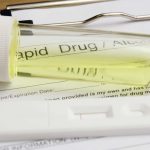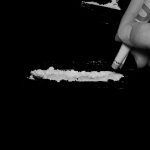- Heroin Withdrawal Symptoms
- Can Heroin Withdrawal Be Fatal?
- Medical Detox
- Medication-Assisted Treatment
Though many people believe you can’t die from heroin withdrawal, the truth is that it can be fatal. Some opioid withdrawal symptoms can lead to life-threatening issues.
If you use heroin regularly and suddenly stop, you’ll likely experience an unpleasant withdrawal syndrome. Don’t try to go through the withdrawal process alone. The safest options for heroin withdrawal are medical detox or medication-assisted treatment (MAT).
Heroin Withdrawal Symptoms
Heroin withdrawal symptoms can start a few hours after your last dose. Symptom severity tends to peak after two or three days, and you may feel better after a week.
Heroin withdrawal symptoms include:
- opioid cravings
- dysphoria (a general sense of unease)
- insomnia (difficulty falling asleep or staying asleep)
- fever
- muscle aches
- goosebumps
- dilated pupils
- yawning
- runny nose
- sweating
- diarrhea
- vomiting
Generally, heroin withdrawal comes with flu-like symptoms that seem severe to the individual but aren’t serious in the long term. But diarrhea and vomiting can lead to dehydration, which can be deadly if it’s left untreated.
Can Heroin Withdrawal Be Fatal?
Heroin withdrawal can be fatal in some cases. If someone becomes severely dehydrated, relapses, or uses dangerous detoxification methods, they could die from heroin withdrawal.
Dehydration & Heroin Withdrawal
Dehydration from heroin withdrawal allows high levels of sodium in the blood (hypernatremia). Untreated hypernatremia causes an electrolyte imbalance that may lead to muscle twitching, confusion, heart failure, seizures, coma, and death.
In 1998, a woman died in a United Kingdom jail from dehydration linked to opiate withdrawal. She was dehydrated because of persistent vomiting, which was severe enough to cause weight loss. She died of brain damage due to a lack of blood flow (hypoxia), resulting from a heart attack.
In the last two decades, several similar cases have appeared in the United States. A lack of support for addicted individuals in jail forces a life-threatening withdrawal process. People who try to detox alone at home face the same risk.
Heroin Withdrawal & Relapse
Since one of the symptoms of heroin withdrawal is intense cravings, some people relapse when they try to detox without support.
If you’ve taken a few days off heroin, your tolerance has probably gone down. If you resume heroin use at the dose you previously used, it will likely be more than your body can handle. A heroin overdose can kill you.
Anesthesia-Assisted Rapid Opioid Detox
Anesthesia-assisted rapid opioid detox (AAROD) is a method of detoxing from heroin while under general anesthesia. A medical professional administers a high dose of an opioid antagonist, like naltrexone, which blocks the body’s opioid receptors and starts the withdrawal process.
The idea is that the most intense withdrawal symptoms will happen while you’re sedated.
Unfortunately, this method seems too good to be true. In New York in 2012, seven people were hospitalized with severe complications following AAROD, and two died.
While some detox facilities still offer AAROD, it is uncommon, and research shows it has no advantage over less risky alternatives.
Medical Detox From Heroin
Since heroin detox can be life-threatening, it’s dangerous to try it on your own. Professional support may save your life if you’re going through heroin withdrawal.
A safe way to detox from heroin is a medically assisted detox program. These inpatient programs provide medical supervision while you go through the withdrawal process. They’re staffed by health care professionals who ensure your safety.
Medical detox programs are equipped to help you with complications of withdrawal. If you become dehydrated, a doctor or nurse can administer IV fluids. They may also give you medication to reduce the severity of withdrawal symptoms, such as over-the-counter pain relievers or antidiarrheal medicine.
Medication-Assisted Treatment For Heroin Addiction
Opioids like heroin are notorious for continuing to cause cravings after withdrawal and detox. Another option is medication-assisted treatment (MAT) for heroin addiction.
MAT combines medication and therapy to curb cravings so you can focus on recovery. Most treatment centers use methadone or buprenorphine (Suboxone)—milder opioids that reduce cravings and withdrawal symptoms.
These medications help heroin-addicted people get the help they need without relapsing or dropping out of treatment.
Quality MAT programs offer a variety of therapies that improve your physical and mental health. Heroin addiction treatment may include cognitive-behavioral therapy, nutritional guidance, exercise, and support groups.
If you or a loved one are struggling with heroin withdrawal, you don’t have to do it alone. To learn more about the withdrawal process or opioid addiction treatment options, reach out to us at Northeast Addiction Treatment Center today.
Sources
- Centers for Disease Control and Prevention — Deaths and Severe Adverse Events Associated with Anesthesia-Assisted Rapid Opioid Detoxification
- JAMA Network — Anesthesia-Assisted vs Buprenorphine- or Clonidine-Assisted Heroin Detoxification and Naltrexone Induction
- National Institute on Drug Abuse — Heroin Research Report: What are the long-term effects of heroin use?
- Wiley Online Library — Yes, people can die from opiate withdrawal
Written by
Northeast Addition Editorial Team
©2024 Northeast Addition Center | All Rights Reserved
This page does not provide medical advice.



